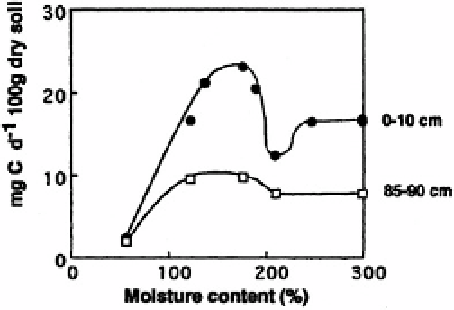Agriculture Reference
In-Depth Information
These differences appear to be largely attributable to differences in the overall composi-
tion of decomposing resources and to pH (see Chapter II Resources): fungi are mainly
primary decomposers feeding on carbohydrates whereas bacteria are generally more capable
of digesting substrates with higher protein contents and low C:N ratios. Fungi tend to
dominate at low pH values since bacteria are favoured by more neutral pH conditions.
2.3
Biology of Soil Micro-organisms
The biology of micro-organisms determines their roles in soils, either directly or in asso-
ciation with other soil organisms. It is also important to identify the major constraints
facing these organisms when living in soil and their adaptations. The other important
task for soil ecology is that of integrating the multitude of chemical transformations
carried out by micro-organisms and the results of their interactions with biotic and
abiotic soil components. The gap between overall estimates of abundance or activity
(
e.g.,
data presented in section III 2.2) and the detailed knowledge accumulated on
individual species under laboratory conditions is still too large. Its reduction is a
tremendous challenge and probably constitutes one of the major limitations to the
progress of soil ecology.
2.3.1 GENERAL CHARACTERISTICS
2.3.1.1
Bacteria
Water relations
Bacteria are aquatic organisms which live in the free capillary or gravitational water
of the soil. As such, their activities are directly dependent on relatively high soil water
contents and optimal activity occurs at water potentials between -0.01 and -0.03 MPa
(
i.e.,
within pores larger than 2-4 filled with water) (Figure III.4).



